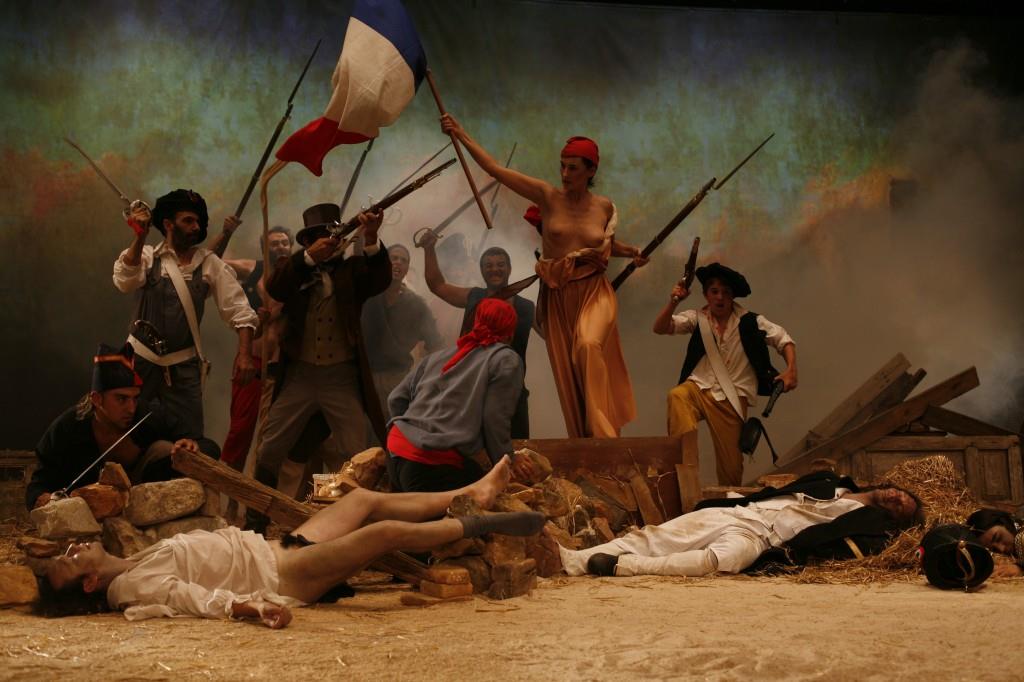
Eleven women present its artistic territories of resistance
Carmen Calvo, Maribel Domènech, Teresa Cebrián, Rossana Zaera, Consuelo Chambó, Inmaculada Salinas, Ana Gesto, Diana Coca, Marina Núñez, Cristina Lucas and Myriam Negre present their work at the historical building of the University of Valencia.
The Cultural Centre of the University of Valencia hosts from 8 May until 7 September (Sala Estudi General) the exhibition ‘Mujeres: territorios artísticos de resistencia’ (Women: artitstic territories of resistance), a selection of works made by eleven women who reflect with her artistic work (with very different languages and resources) about the society and culture that we have inherited and we want to improve. Their discourse constructs territories of commitment, denunciation, historical review, and resistance. Some works more poetical, other more transgressive and irreverent than others. But all are categorical. The invisibility of women is linked to history, but the current captivity comes very often from aesthetical and patriarchal constraints, and this is what this exhibition shows.
The Valencian artists Carmen Calvo, Maribel Domènech, Teresa Cebrián, Rossana Zaera and Consuelo Chambó, along with Inmaculada Salinas, Ana Gesto, Diana Coca, Marina Nuñez, Cristina Lucas and Myriam Negre, are part of the exhibition curated by Irene Ballester Buigues, in her commitment for making visible women as subjects of art and for questioning the role of passive object imposed to women by the patriarchal culture.
‘Mujeres: territorios artísticos de resistencia’ shows sewing machines, patterns and needles, computer graphics screened on the floor, installations, videos, phothographs and press clippings. That’s why the pieces selected are part of what Irene Ballester Buigues names ‘territory of resistance’, a space for providing new meanings.
Among the pieces of this exhibition we can find, at the entrance of the room, a dress of more than four feet wide and high, knitted with electrical wires by the artist Maribel Domènech. Para observer el mundo a una cierta distancia (To see the world from a certain distance), that invites to reflect on the empowerment of women through new technologies. The installation that Rossana Zaera proposes with El Convite (The Banquet) presents all kinds of pieces of her grandmother for talking about a past not always happy. In the work La Máquina del Tiempo (Time Machine), she replaces the threads of a sewing machine by her hair.
The video La liberté raissonnée by Cristina Lucas, the last piece of the room, is a very critical review on the work of Delacroix, Liberty Leading the People. Because although women have participated side by side with men in several revolutions for achieving social progress, historically they have been not able to enjoy for which they had fought.
Moreover, the Valencian artist Carmen Calvo, deals with female captivity during the Franco’s dictatorship for visualizing the current status of women in society.
The curator Irene Ballester Buigues is doctor in History of Art by the University of Valencia. She is the author of El cuerpo abierto. Representaciones extremas de la mujer en el arte contemporáneo, a study about women artists who take art representation to the edge. She is also the person responsible of the festival ‘Miradas de Mujeres’ (Women Views), a new form of cultural event that focuses on equality and women rights.
‘Mujeres: territorios artísticos de resistencia’ is an exhibition that is linked to the 7th National Meeting of Equality Organisations of Public Universities that will host the University of Valencia on 5 and 6 June. This is the first time that a public Valencian university organises the Meeting of Equality Units. These conferences bring together over a hundred people, among them the persons responsibles of the different Equality units and organisations of all Public Universities and it deals with three big issues for discussion: conciliation, equal teaching and research with gender perspective.











